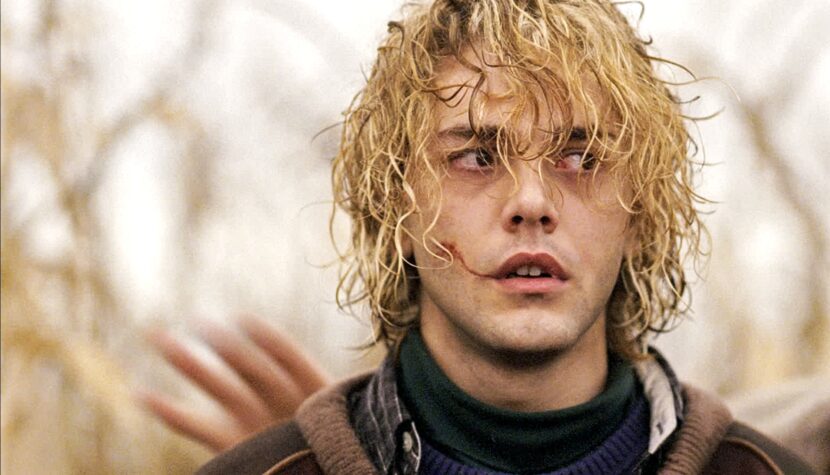TOM AT THE FARM. Pure thriller, where nothing is unequivocal. A must-see

Back in 2013, Dolan didn’t have to prove anything anymore. Laurence Anyways has unequivocally asserted that he is not just a seasonal trend – a stereotypical hipster who plays a few French songs in a movie, plays with colors, and gathers critical acclaim just for being “young, talented, and beautiful.” However, it must be said clearly that Laurence Anyways still suffered from a certain Dreamed Love complex. I remember discussing him with a friend before the premiere. She said that no matter what Dolan serves us, it will undoubtedly be one of the “prettiest” films of the year. She was not mistaken. Despite Laurence being much heavier and more overwhelming than the story of a youth playing with the feelings of two friends, it was still the exaggerated world of a young Canadian. A world full of manners, outlined with bold strokes. In Tom at the Farm, everything changes, though in the background, you can still hear French songs.
The main character suffers from loss. His partner, a young man from a small, conservative village at the end of the world, has departed from this world. Tom attends his funeral, but from the beginning, something is off; reality resists. The navigation is shattered on the side of the road, leading astray instead of guiding to the destination. Upon reaching the deceased’s home, Tom finds it empty. There’s no one there, although traces reveal that someone was there just moments ago. The emptiness of the rooms is the most striking signal that the person you loved is no longer alive. They left just a moment ago, and the wounds are still raw and bleeding.

Soon, Tom, sleeping at the kitchen table, is awakened by the mother of the deceased young man. From the beginning, it is evident that something has broken in the woman, that she is insane. On the farm surrounding the house, full of corn as sharp as a razor – after all, it’s October, and the plant’s leaves are true blades at this time – works the deceased’s brother. Tom receives the information about his existence with great surprise. His encounter with Francis is a traumatic experience on various levels. It’s not just that the brother is a madman, brutal, even more insane than the reality-detached mother. The main carrier of trauma is the fact that this madman resembles the deceased – the smell, voice, gestures, shared stories. The dead rise from the grave and are present even more intensively than in life. Tom loses orientation, begins to get lost, and allows himself to be drawn into a game whose rules the viewer must decipher.
Dolan created a dark, brutal film with Tom at the Farm. Almost completely devoid of the aesthetic fireworks of his previous productions. Behind the local pub’s bar, a neon sign “The Real Thing” shines, one of the few vivid points in Tom’s monochromatic color palette. Apart from that, the color red stands out strongly, reserved only for blood. When Tom tells his friend about the farm, he emphasizes with excitement in his voice that “everything here is so real.” Cows give birth, calves come into the world along with buckets of blood, bruises and cuts on the body from running through the razor-sharp cornfield, and powerful blows from the impulsive Francis are real. This is not the world of Dreamed Love, where the most intriguing problem is whether the second-hand dress is vintage enough.

Tom at the Farm is a pure psychological thriller. One of the best representatives of this genre in many years. The viewer is thrown into the midst of a world dominated on one side by death and loss, on the other by a desperate desire for life. And it’s not about life understood as a term debated by legions of philosophers, but about life felt in its most down-to-earth, almost atavistic dimension. Those mutilated hands, that blood, the tension on the death-survival line, almost animalistic marking of one’s presence, and the scream “I am here, damn it, I exist.” It seems that in the midst of this circus, there is a band of madmen, that no one is normal. However, Dolan constructs the world so consciously and intelligently that we quickly start to question whether those who initially seemed the most insane are not slowly becoming oases of sanity.
In Tom, nothing is straightforward, valued in black and white. We don’t know if someone will die in a moment or if some secrets carefully hidden under the rug will be exposed. Over time, we even begin to doubt whether the funeral – supposedly the pretext for the entire story’s development – was not just a staged spectacle that ended with burying an empty coffin in the ground. Dolan does a fantastic job. If his cinematic development continues at such an impressively fast pace, in a few years, we will be talking about him in terms reserved only for the greatest creators. Tom at the Farm – a must-see.

